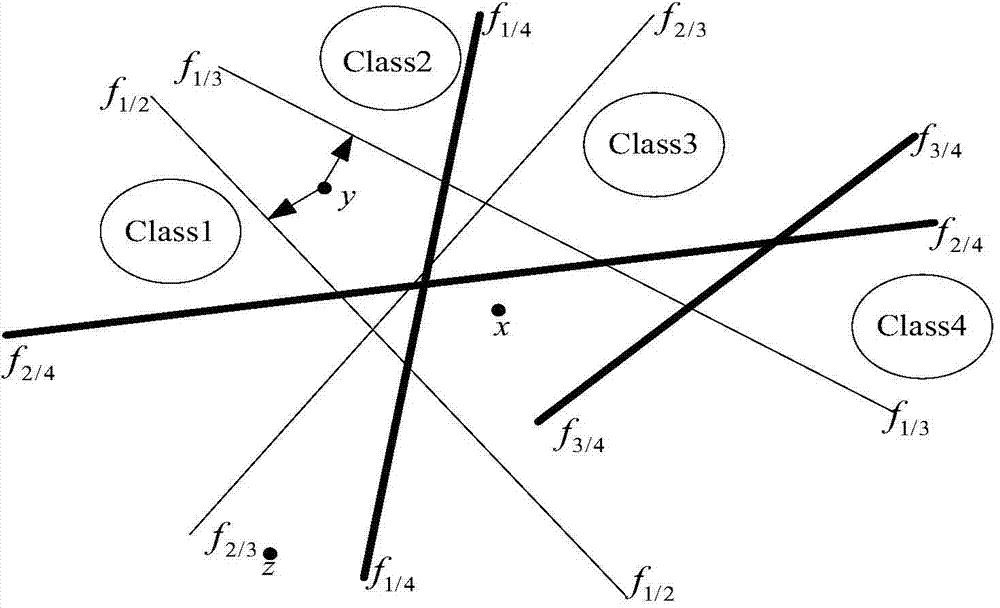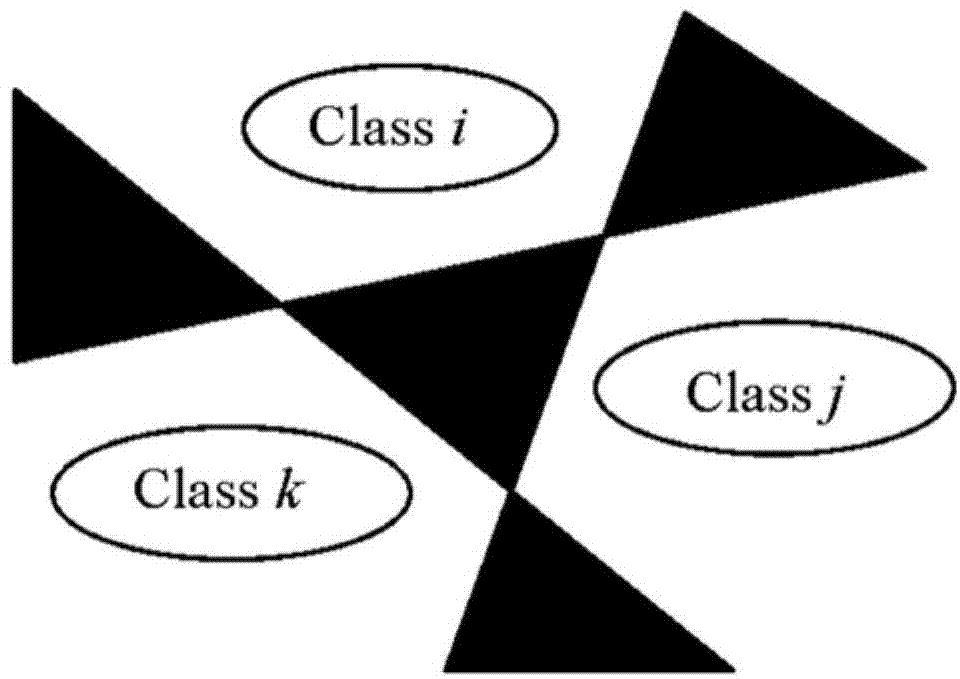DDAG-based SVM multi-class classification active learning algorithm
An active learning, multi-classifier technology, applied in computing, reasoning methods, computer components and other directions, can solve problems such as multi-manual participation and feedback, rejection of points or decision-making blind spots, active learning without incremental learning ability, etc.
- Summary
- Abstract
- Description
- Claims
- Application Information
AI Technical Summary
Problems solved by technology
Method used
Image
Examples
Embodiment Construction
[0149]Aiming at the problems of multi-class classification active learning mentioned in the background technology section, and according to Figure 4 The SVM multiclass classification active learning frame model given in the present invention provides a kind of SVM multiclass classification active learning method based on DDAG, wherein, the process P1 in the framework model adopts a kind of multiclass classification based on improved DDAG method, the active learning process P2 and P3 adopt a variety of active learning methods to integrate complementary strategies. In order to speed up the training and learning process, the process P4 uses the SVM incremental learning algorithm. For the convenience of description in this paper, this method is called DDAGB-MASVM algorithm ( Decision Directed Acyclic Graph Based—Multi-class Active SVM, DDAGB-MASVM).
[0150] The present invention will be specifically introduced below in conjunction with the accompanying drawings and specific embo...
PUM
 Login to View More
Login to View More Abstract
Description
Claims
Application Information
 Login to View More
Login to View More - R&D
- Intellectual Property
- Life Sciences
- Materials
- Tech Scout
- Unparalleled Data Quality
- Higher Quality Content
- 60% Fewer Hallucinations
Browse by: Latest US Patents, China's latest patents, Technical Efficacy Thesaurus, Application Domain, Technology Topic, Popular Technical Reports.
© 2025 PatSnap. All rights reserved.Legal|Privacy policy|Modern Slavery Act Transparency Statement|Sitemap|About US| Contact US: help@patsnap.com



